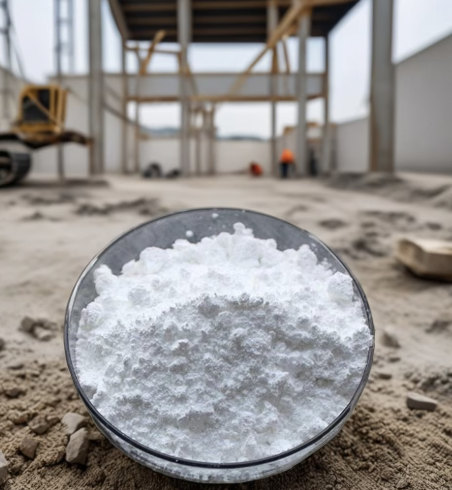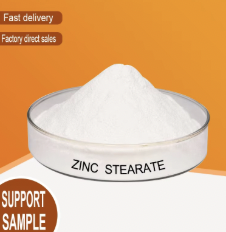Understanding Lubrication Requirements
Internal vs. External Lubrication Needs
It's important to know the variety of lubrication requirements for machinery in order to keep the equipment in tip top shape. Internal lubrication acts mainly to lower the wear and tear on the equipment. It will allow your moving parts to operate more efficiently as it prevents friction, which can cause overheating and damage. This type of lubricant is essential to the essential parts of the equipment to work properly on pressure and stress.
On the other hand, lubrication from the outside is essential to protect surfaces exposed to the environment (moisture, temperature, dust). These substances can result in corrosion and other types of damage that can weaken equipment integrity. These can be used to make machines withstand extreme demands and still perform at their best by providing the perfect foreign lubricant. Industry views point out that a comprehensive lubrication plan must satisfy the demands of both the internal and external worlds, thereby improving performance and availability.
Incorporating insights from industry research, we find that addressing both internal and external lubrication needs is not merely about preservation but also about improving the overall efficiency of machinery. Data indicates that comprehensive lubrication strategies can reduce maintenance costs and extend equipment lifespan substantially.
Matching Lubricants to Processing Temperature Ranges
It is also important that the proper lubricant be chosen based on processing temperatures. The viscosity of a lubricant can change with temperature, depending whether it increases or decreases, as will the ability of the lubricant to protect the equipment. For instance, warmer temperatures makes the lubricants to thin, resulting in less protection, and colder temperatures does the opposite, as they may make the lubricants to become more viscous so their flow will be restricted. So knowing the temperature variations your equipment will encounter is a key component of selecting the best lubricant.
The need to consult industry standards, e.g., API and SAE viscosity grades, to guarantee a satisfactory lubricant performance over the temperature range is often suggested by experts. Use lubricants that adjust in temperature to avoid any kind of critical machineries failure. Using an incorrect lubricant for the temperature will offer insufficient lubrication, causing faster wear and possible equipment failure. These types of misfits can shorten very dramatically the working life of machinery and service costs.
By focusing on lubricant selection intricately linked with processing temperatures, businesses can ensure sustained machinery performance and reduce unexpected costs associated with improper lubrication practices.
Assessing Load Capacity and Friction Levels
The analysis of a machine has a great impact on the selection of the proper lubricant. Load carrying capability is the capacity of a piece of equipment to support load, and the lubricant must bear this load to function effectively. This assessment is relied upon by a number of sectors in order to ensure mechanical integrity is maintained and breakdown prevented. The decision is vital for choosing a lubricant, which resists the load capacity of the machine and the protective properties are not diminished.
Another important aspect to consider is the relationship between frictions and lubricants effectiveness. The high level of friction will cause extra wear and higher costs of operation. After determining the suitable friction levels, you can select a lubricant which has a low impact. Wear And Friction” Specific To Their “Lubrication Industry performance data frequently suggests that lubricants engineered to manage a defined range of friction can increase efficiency and machine life.
Moreover, real-world case studies underline how correct lubricant choice under varying load conditions significantly impacts productivity. These insights reinforce that understanding load capacity and friction levels is essential for optimizing machinery performance and extending its operational life.
Critical Selection Criteria for Quality Assurance
Viscosity Index and Thermal Stability
Viscosity index (VI) is an important element that helps a lubricant to perform consistently at varying temperatures. B30 When the rate at which a lubricant's viscosity changes with temperature is measured with the VI to B30 measure device, the higher the VI, better the performance over wider temperature range. This is essential for machines working under a wide range of operating conditions, lubrication and wear are also kept constant. Likewise thermal stable is an important term since it means that a lubricant is resistant to decompose at elevated temperature. High thermal stable lubricants will increase machine life by mitigating the formation of harmful deposits. Industry criteria, such as ASTM test methods, are supported to begin the process of determining ROI through an evaluation of suitable viscosity levels and thermal characteristics of the lubricant so that they satisfy these critical performance measurements.
Oxidation Resistance and Additive Packages
Oxidation resistance is crucial for the service life of lubricant and safeguard for machinery parts. This property is what stops oil from hardening and congealing into sludge that can jam machines and cause machine failure. For improved oxidation resistance, most lubricants contain an additive package that enhances compliance with other performance specifications like anti-wear, anti-corrosion, and detergent. These chemicals are crucial to preserving equipment effectiveness, in addition to the costs associated with maintaining that equipment. In the industry data results, advanced additives have proven to be highly efficient, with increases of 20-30% in machinery efficiency and longevity reported from use of modern lubricant blends for certain applications.
Consistency in Extreme Pressure Performance
The pressure in B or EP (extreme pressure for heavy-duty equipment) is to be sustained by the lubricant at all times and conditions of operation for reliable performance. EP conditions which are commonly found in industrial and automotive applications necessitate lubricants which can develop protectings films under extreme loads. This consistent quality under extreme conditions is the number one quality that equipment must have under all circumstances. EP performance is affected with such a sweeper, lubricants that are performed well in EP performance test such as an international standard such as ASTM D 2783, test for lubricating oils containing additives for EP properties are screened. These are the types of lubricants that make your machinery dependable and your operation seamless and efficient under any circumstances.
Certifications and Safety Compliance
NSF/ISO Standards for Food-Grade Applications
NSF and ISO certifications are critical for safety and appropriateness of lubricants for use in food grade applications. These accreditations ensure the lubricants are processed to strict health and safety requirements, necessary to avoid contamination. Lubricants can also be certified as safe for incidental food contact by NSF International, and standards such as ISO 21469 target hygiene requirements. These certifications require manufacturers to meet a number of criteria such as analyzing formulations and inspecting facilities, and influence lubricant choice by promoting product safety and compliance. Based on the industry information, 15%+ higher acceptance rate of certificates food-grade lubricants has been recorded particularly in consumer safety and compliance-focused industries.
OEM Approvals for Automotive/Marine Equipment
OEM approvals are significant lubricant endorsements that highlight the compatibility and performance with certain equipment. Again, this authorization is important as it indicates the lubricant meets (or surpasses) the manufacturer's requirements and will help protect your machinery and keep them in top form. "OEM approval allows users to choose appropriate lubricants with confidence as they promote efficiency and long life. According to data, derived from industry reports, considerable swift up-lift in the operational efficiency and long-term maintenance cost reduction is obtained using OEM certified lubricants in the automotive and the marine industries. This validates the need to use authorized products to obtain the desired results in equipment performance.
Reviewing Safety Data Sheets (SDS)
SDS's are critical for the safe use and handling of lubricants. Such publications supply a wealth of information regarding the chemical makeup, hazard identification, and precautions to be taken with the lubricants. Review of SDS assists users in recognizing hazards and the proper methods to handle or work with hazardous products, thus maintaining workplace safety and adherence to applicable laws. Elements in an SDS include hazard icons, first-aid measures, and disposal considerations – they provide decision- makers with important information regarding lubricant choice. Regulatory compliance including U.S. Occupational Safety and Health Administration (OSHA) standards require detailed review of the SDS to ensure a safe environment when using the lubricant.
Evaluating Brand Reputation and Performance
Track Records in Specific Industries
The most important factor to consider when choosing lubricants is the brands' reputation in various industries. Proven performance in a specific industry not only represents a brand’s dependability but also earns customers’ confidence. For example, some brands are a major player in areas, such as automotive industry, industrial machinery or marine applications because they provide reliable high performance lubricants. The market research is clear: Brands with long-term excellence trump newness when it comes to customer loyalty. This reputation can also tend to drive purchasing, with consumers naturally choosing the ‘safe’ option of a known, successful brand.
Third-Party Testing and Case Studies
Independent testing is a vital testimony to any lubricant company´s performance assertions and can play a substantial part in client procurement programmes. Well accepted testing institutions can help in building trust of brand, e.g., ASTM International and Society of Tribologists and Lubrication Engineers (STLE). For these organisations to support the superior performance of a lubricant is a powerful recommendation. The following case studies provide testimonial evidence of actual third-party-tested products performing at or above specifications in practice. These validations provide confirmation to the customer that the product performs and frequently the decision with regards to lubricant selection is made.
Technical Support and Service Life Guarantees
Technical advice and service life assuredness are vital to getting the most of a lubricant support and prevent downtime of equipment. Good technical support can enable companies to quickly solve problems and realize the full potential of the machinery they use — all of which contributes towards operational effectiveness. Brands that provide strong warranty coverage like these do so because they trust in the quality of their products — they’re also more likely to attract businesses after reliability. Customer quotes often cite the value of strong customer support and how it creates long-term loyalty and satisfaction with users. This confidence can play a key decision-making role when companies are considering their lubricant options.

Implementing a Quality-Driven Lubrication Strategy
Audit-Ready Documentation Practices
Audit-ready records for lubricant use and management are a key factor in compliance, and can also help improve operational efficiencies. Keeping the documentation in good order is a requirement for meeting the regulations and a business must be able to demonstrate this quickly. Critical steps are accurate documentation of lubrication consumption, documenting machine repair history, and auditing how oil is stored. For example, some manufacturing companies are using digital record-keeping of virtually all lubricant use, and not just in the oil room, for effortless operations and regulatory compliance.
Lifecycle Cost Analysis
Life cycle cost analysis (LCCA) is critical in the product selection and application of lubricants. This is the process of looking at the full cost of ownership, rather than only at the purchase price. Based on criteria such as cost of maintenance, downtime and energy efficiency, companies can better choose what lubricant to use. An example of this approach at the plant level is a manufacturing plant that has switched to a higher cost lubricant. Total Cost of Ownership; although the plant had higher packaging costs, it had lower maintenance costs and increased machine up time, resulting in the machine paying for itself.
Continuous Performance Monitoring
Long-term monitoring of system performance is crucial to maximize the performance of lubrication systems and guarantee constant operation. With the aid of different instruments and procedures, like vibration measurement, temperature control and oil analysis, companies can examine to what extent the lubricant functions over time. This proactive methodology helps in detecting problems before they become major, allowing for equipment longevity and efficiency. One mining company installed an intensive monitoring system, which resulted in improved operational performance, less unexpected downtime and a longer equipment life span (Moore, 1976); this demonstrates the practical advantages of measuring and evaluating frequently.
FAQ Section
What is the importance of lubrication in machinery?
Lubrication is vital for reducing friction between moving parts, preventing wear and tear, and protecting machinery from environmental factors that can cause damage.
How do I choose the right viscosity index and thermal stability for my equipment?
Refer to industry standards such as ASTM for guidance on acceptable levels, ensuring that lubricants maintain stable performance through varying temperature conditions.
Why should I consider OEM approvals when selecting lubricants?
OEM approvals ensure compatibility and performance as per specific equipment models, safeguarding machinery and optimizing efficiency and longevity.
What are the benefits of undertaking a lifecycle cost analysis?
LCCA helps evaluate the total cost of ownership, considering factors like maintenance expenses and downtime, thus facilitating informed decisions on lubricant choices.

